Quick Start
What is respond.io?
Setting Up an Account
Connecting Channels
Inviting Your Teammates
Getting Contacts to Message You
Automated Welcome and Away Messages
Responding to Messages
Glossary of Terms
Channels
WhatsApp Business Platform (API) Quick Start
Getting Ready for Inbound Conversations
Getting Ready for Promotional Messaging
WhatsApp Official Business Account (Blue Tick)
Grow your WhatsApp Audience by Maximizing Entry Points
Get WhatsApp API Account for Government Agencies
WhatsApp Business Calling API
Meta Business Verification
WhatsApp Message Templates
WhatsApp Pricing
WhatsApp Business Platform (API) Channel Configuration
WhatsApp Messaging Limits
Meta Product Catalog
Change Your WhatsApp Business Display Name
Migrating from WhatsApp Personal or WhatsApp Business App
Phone Number Migration to respond.io WhatsApp Business Platform (API)
Turn-off WhatsApp Number Two-Step Verification
WhatsApp Cloud API
360dialog WhatsApp
Twilio WhatsApp
MessageBird WhatsApp
Vonage WhatsApp
Phone Number Migration to WhatsApp Cloud API
TikTok
Facebook Messenger
Facebook Messenger Overview
Facebook Messenger Quick Start
Facebook Chat Plugin
Facebook Private Replies
Facebook Message Tag
LINE
Viber
Telegram
Website Chat Widget
Website Chat Widget Overview
Website Chat Widget Quick Start
Install Website Chat Widget on WordPress
Install Website Chat Widget on Shopify
Install Website Chat Widget on Wix
Install Website Chat Widget on Joomla
Install Website Chat Widget on Squarespace
SMS
Custom Channel
Product
Dashboard & Reporting
Dashboard
Reports Overview
Reports: Conversations
Reports: Responses
Reports: Resolutions
Reports: Messages
Reports: Contacts
Reports: Assignments
Reports: Leaderboard
Reports: Users
Reports: Broadcasts
Inbox
Inbox Overview
Assignment and Closing a Conversation
Custom Inboxes
Interacting with Respond AI Prompts
Using AI Assist
Contacts
Broadcasts Module
Workflows
Workflows Overview
Workflow Triggers
Workflow Steps Overview
Step: AI Agent
Step: Send a Message
Step: Ask a Question
Step: Assign To
Step: Branch
Step: Update Contact Tag
Step: Update Contact Field
Step: Open Conversation
Step: Close Conversation
Step: Add Comment
Step: Jump To
Step: Date & Time
Step: Wait
Step: Trigger Another Workflow
Step: HTTP Request
Step: Add Google Sheets Row
Step: Send TikTok Lower Funnel Event
How to Avoid Workflow Loops
Step: Update Lifecycle
Step: Send Conversions API Event
Dynamic Variables
Workspace Settings
Managing a Workspace
General info (previously General)
User settings (previously Users)
Teams (previously Team Settings)
Channels
Growth Widgets
Contact Fields
Integrations
Respond AI
Closing Notes
Snippets
Tags
Files
Data Export
Contact Import
Lifecycle
Organization Settings
Organization Overview
Account info (previously General)
Admin Settings (previously Users)
Workspaces
WhatsApp Fees
Billing & Usage
Security
User Account
Mobile App
Installing respond.io Mobile App
Messaging From Your Mobile
Managing Notifications On Your Mobile
Configuring mobile app settings
Help Menu
Conversation Led Growth
Capture Leads
How to Collect Contacts’ Emails and Phone Numbers
How to Route Contacts from CTC Ads to Agents
How to Send Outbound Sales Messages
How to Track Conversation Source from Multiple Websites
How to Enrich Customer Data from a CRM or other Business Software
Convert Leads
How to Automate Product Info Sharing in Conversations Initiated via CTC Ads
How to Automatically Qualify Contacts Based on Budget Using AI Agent
Assignment Strategy: How to Automate Contact Distribution & Load Balancing
How to Maximize Customer Service Potential with AI Agent
How to Automate Contact Information Collection with AI
How to Block Contacts and Manage Spam
How to Create Automated Welcome and Away Messages
How to Create Automated Chat Menus
How to Route Contacts to Preferred AI Agent
How to Route Contacts by their Preferred Language
How to Route Contacts by Team Functions
How to Route Contacts by Shifts
Assignment Strategy: How to Unassign Agents after Conversations Closed
How to Get Contacts’ Consent for Personal Data Collection
How to Promptly Transfer Conversation Between Agents
How to Guide Customers from Exploration to Purchase with Engaging Menus
How to Optimize Customer Onboarding with Automated & Customized Welcome Messages
How to Streamline Meeting Scheduling via CTC Ads
How to Get a Complete View of the Customers
How to Simplify Customer Escalation with Automation
How to Transfer Contacts to the Next Shift Automatically
How to Optimize Agents’ Productivity in the Inbox Module
How to Write an Optimal AI Persona (Best Practices)
How to Write the Best Knowledge Sources for AI Agents
How to Align AI Conversations with Your Brand Voice
How to Draft Customer Replies with AI
How to Convert Image to Text Using AI
How to Automate Calculations Using AI
How to Automate Lifecycle Tracking in Google Sheets
Retain Customers
How to Route New and Returning Contacts
How to Route VIP Contacts
How to Send CSAT to Customer and Save Data in Google Sheets or CRMs
How to Send Outbound Support Messages
How to improve lead targeting and automatically send purchase events to Meta when a customer makes a payment
Reporting and Analytics
Broadcasts Use Cases
How to Send a Simple Broadcast
How to Start a Workflow Based on Broadcast Response
How to Import to Broadcast via WhatsApp
How to Troubleshoot a Failed Broadcast
Integrations
Dialogflow
Dialogflow Overview
Dialogflow: Connecting to Dialogflow
Dialogflow: Creating a Chatbot
Dialogflow: Managing Intents
Dialogflow: Parameters
Dialogflow: Events
Dialogflow: Response Templates
Dialogflow: Custom Payloads
Dialogflow: Fulfillment Webhook Request
Zapier
E-Commerce Integration: Shopify
E-Commerce Integration: BigCommerce
E-Commerce Integration: WooCommerce
E-Commerce Integration: Magento
CRM Integration: HubSpot
CRM Integration: Salesforce
CRM Integration: Pipedrive
CRM Integration: ActiveCampaign
Zapier
Make
Meta Business Accounts
TikTok Messaging Ads Integration
Developer API
HubSpot
Webhooks
Salesforce
Table of Contents
- Home
- Quick Start
- Setting Up an Account
Setting Up an Account
 Updated
by Sana
Updated
by Sana
To begin using respond.io, sign up on the platform following a four-step process which requires a valid email address. Once registered, you can create your organization and set up workspaces.
All first-time users are guided through an onboarding module, which introduces the platform's basic features.
Signing up
Step 1: Navigate to the Sign-up page
Click here to open the sign-up page.
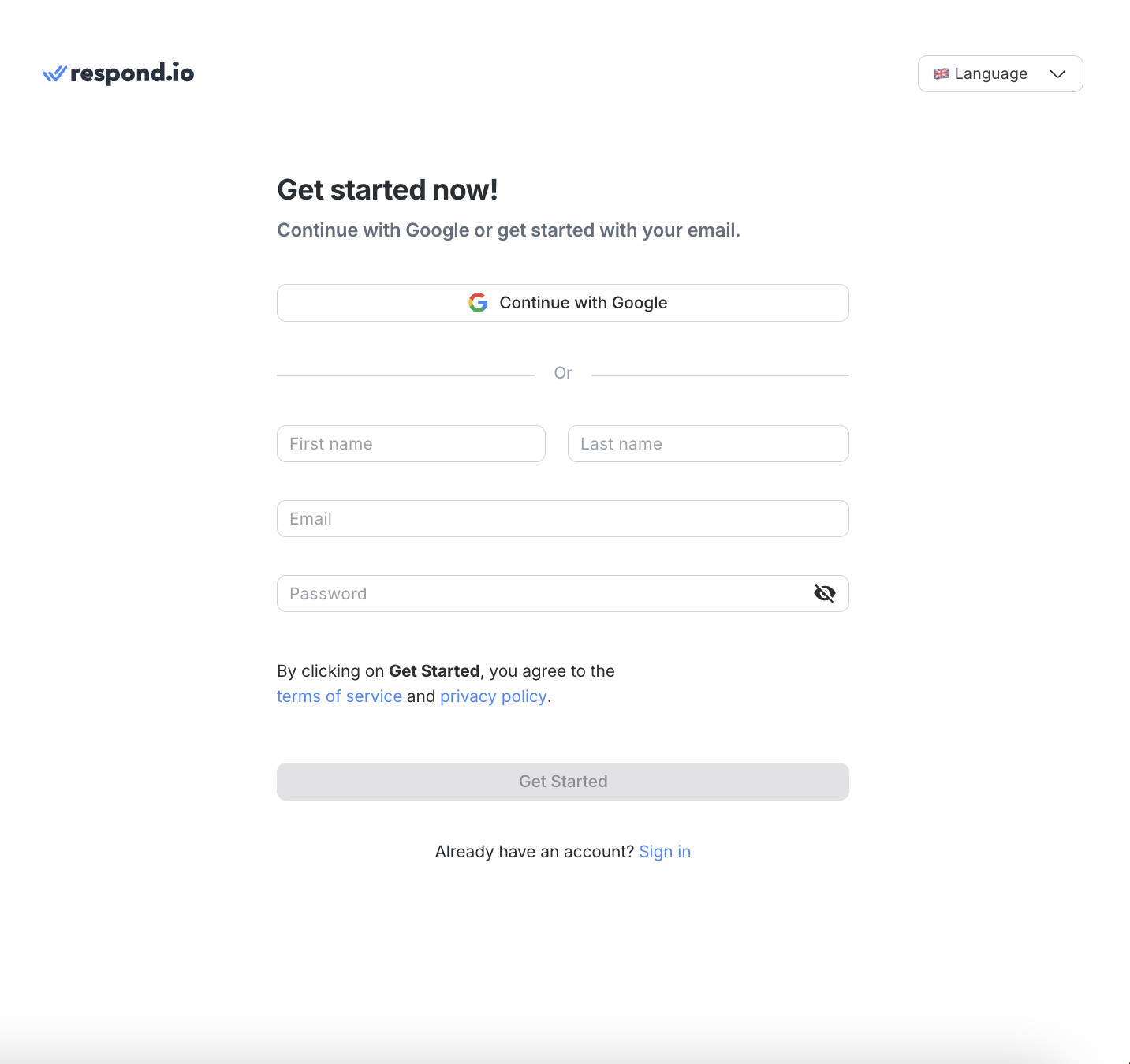
Step 2: Select a sign up method
You can sign up using your Google account. Alternatively, you can sign up using your work email and password.
Step 3: Fill in the required information
Provide your first name, last name, email and password. Click Get Started when you are done providing your information.
Step 4: Verify your email address
You will receive a verification code at the email address provided in Step 3. Entering this code is mandatory to complete the verification process.
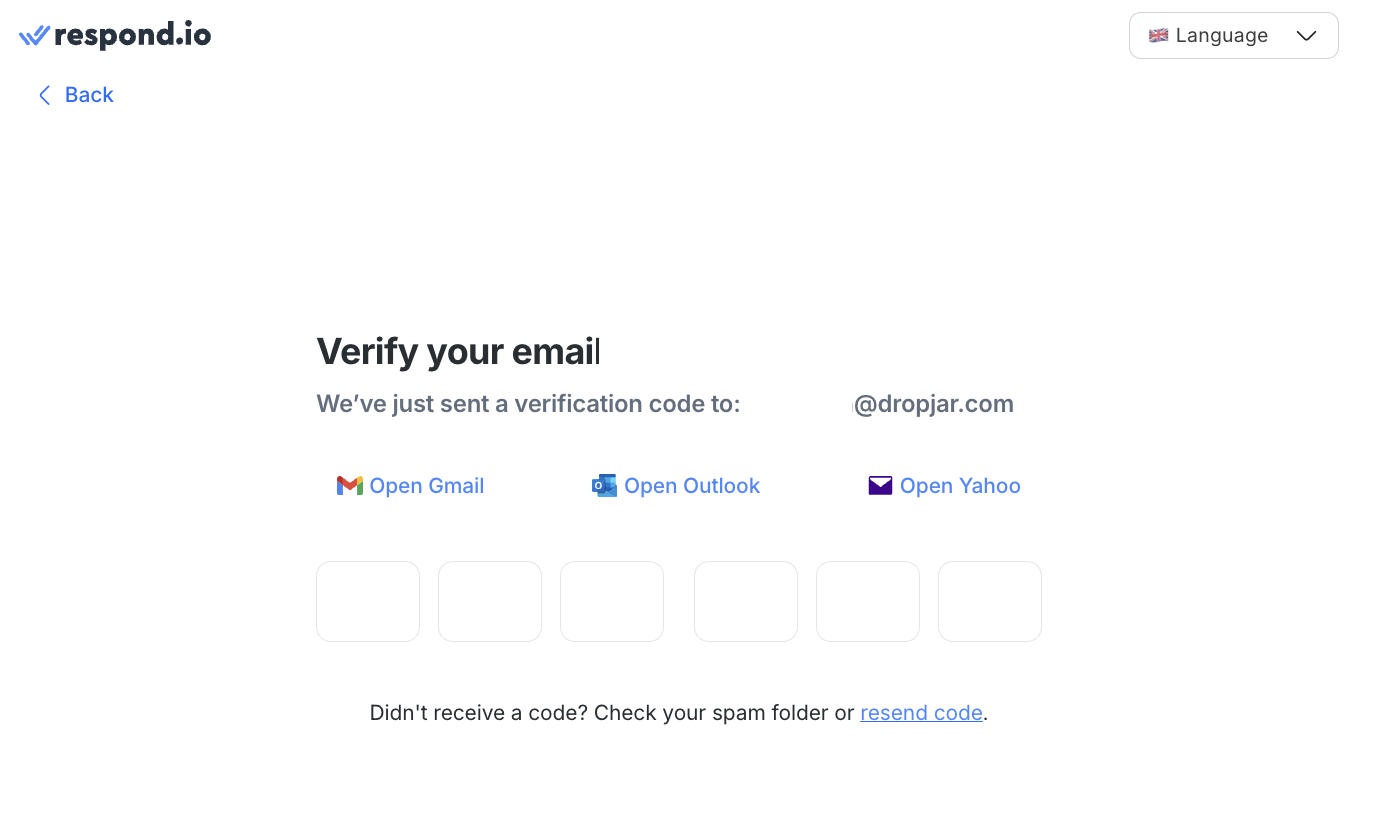
Setting up an Organization
Once you have signed up, you can begin your journey by setting up an organization and giving us some information about your preferences.

The information you provide helps us understand you better.

After providing all the information, click Get Started to start using respond.io.
Workspaces inside an Organization
A Workspace is an independent sub-account within the Organization.
A Workspace can have multiple Users, and a single User can be granted access to multiple Workspaces. Each Workspace operates autonomously, so changes in one Workspace will not be reflected in other Workspaces within the same Organization.
Your first Workspace is created when you create an Organization.
Onboarding yourself
As a first-time User, you are directed to the onboarding page. Here you learn the basics of messaging, connecting Channels and inviting your team members, automating communication with Workflows, and increasing your outreach with Broadcasts.

If you navigate to another module, you can return to the onboarding module by clicking the purple icon on the side navigation menu.
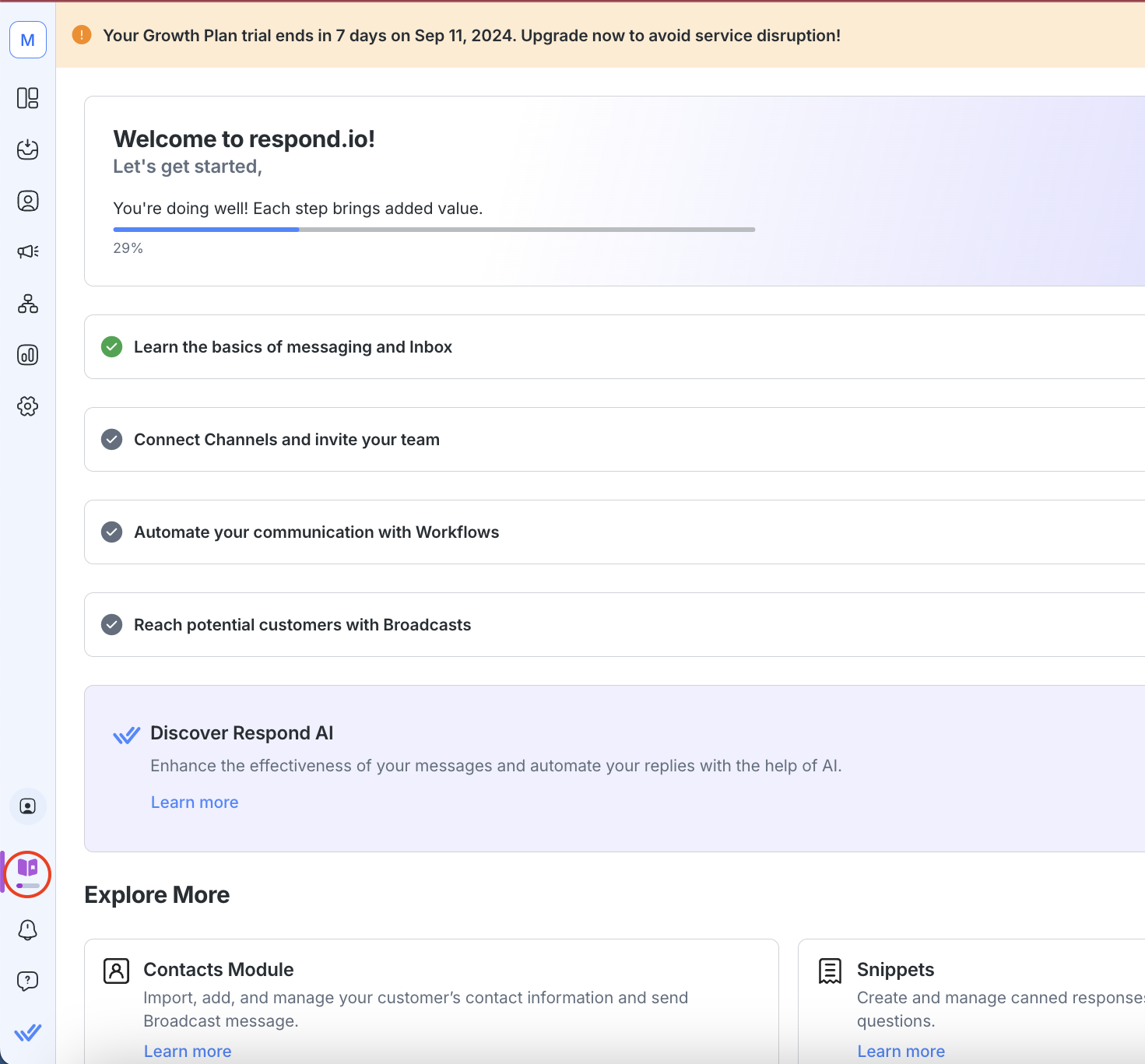
Messaging and Inbox
Send yourself a message and see how your message appears in the Inbox module.
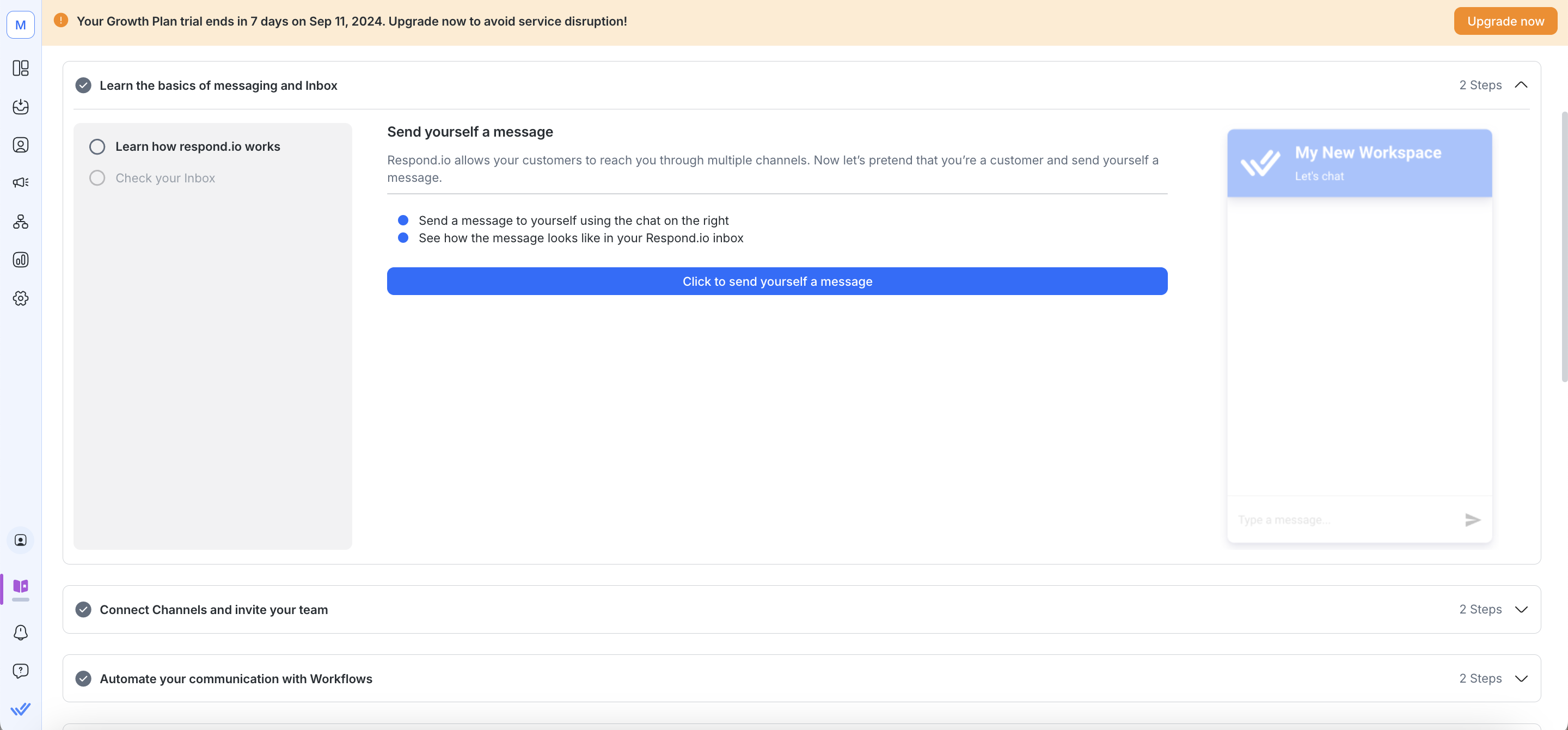
You receive the message in the Inbox module from a demo Contact on a demo Channel.
Connecting Channels and Inviting your Team
Next, connect to a Channel of your choice to send outbound messages. A few popular channels have already been listed, however, you can explore other Channels by clicking Discover all channels.
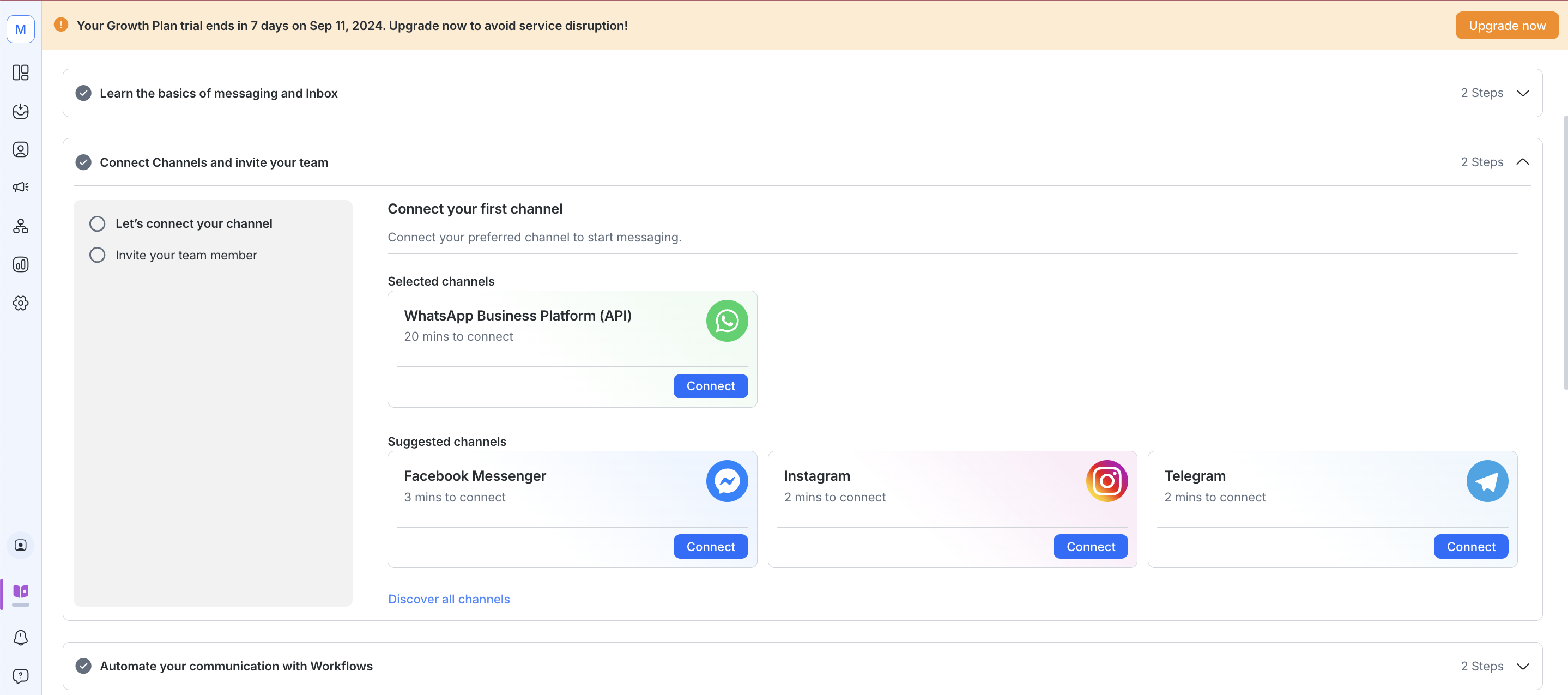
Click Connect to connect to the preferred Channel.
Automating with Workflows
You can automate your conversation using workflows created in the Workflow module. Click Next to view a list of pre-designed workflow templates. Click Use Template to test a template.
You can view a complete list of workflow templates by selecting Discover all templates.
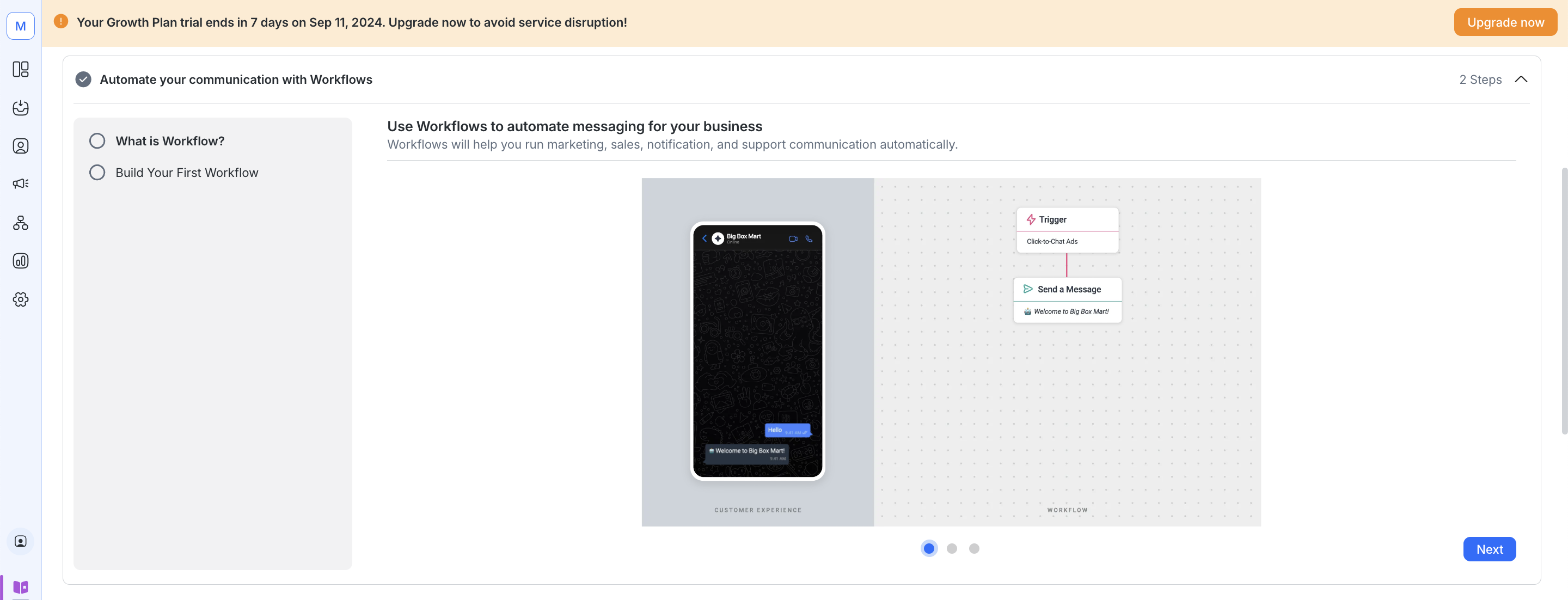
Sending Broadcasts
To send a broadcast, connect a Channel that allows broadcast messages and create your broadcast message.
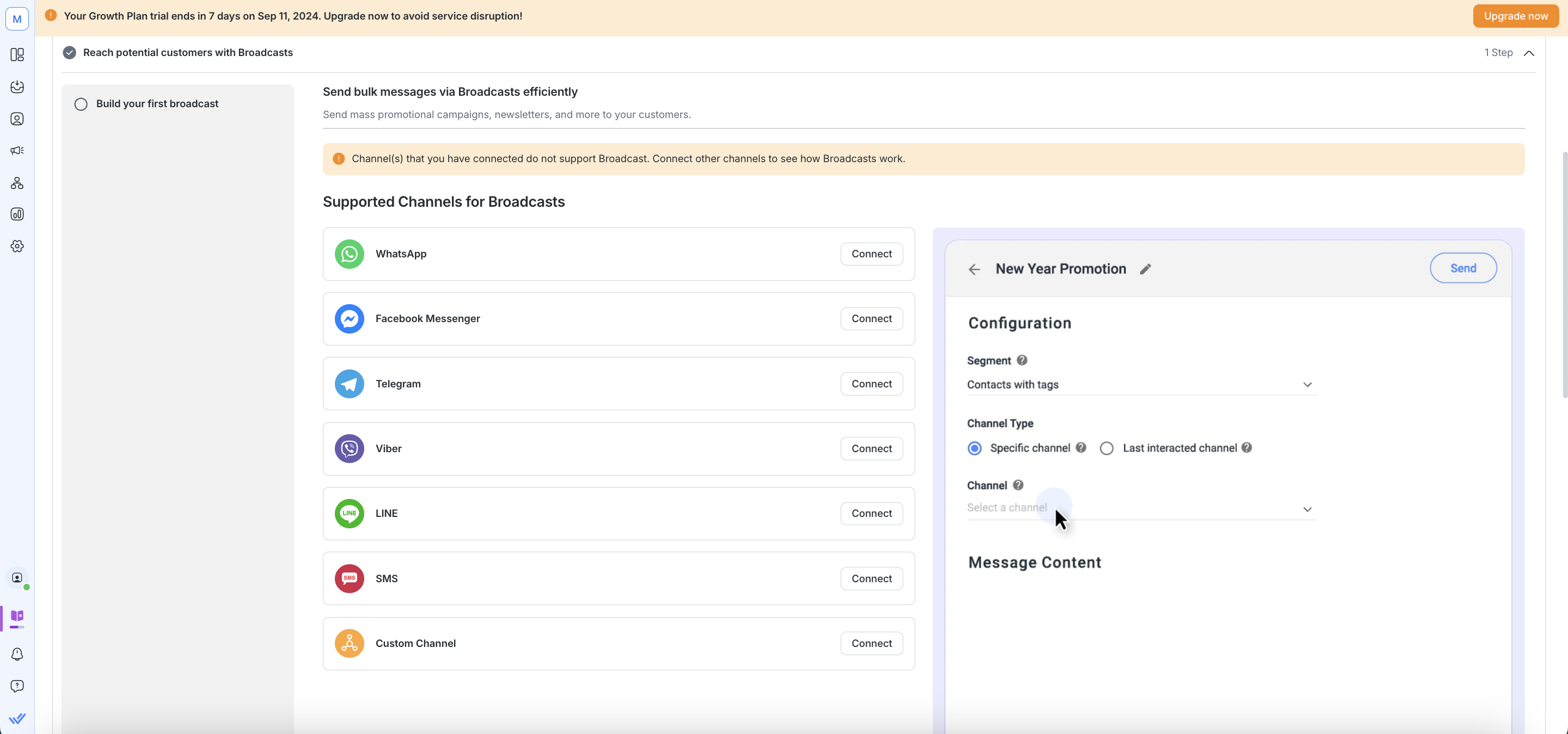
Signing in to respond.io
Navigate to the respond.io platform and sign in by providing your login and password.
If your profile has Two-Factor Authentication (2FA) enabled, you are redirected to a page where you must enter a 6-digit authentication code generated by your preferred authenticator app (Google Authenticator or Authy) to log in to your profile.
Use Two-Factor Authentication (2FA) to add an additional security layer to your profile.
Signing in to the mobile app
This step is optional. However, we encourage you to use the mobile app to work on the go. Learn more on how to install and log in to respond.io mobile app on your mobile device here.
Download respond.io Web App
This step is optional. You can download the Web App by clicking the Open Web App icon in the address bar and clicking "Install" to save the app to your desktop.
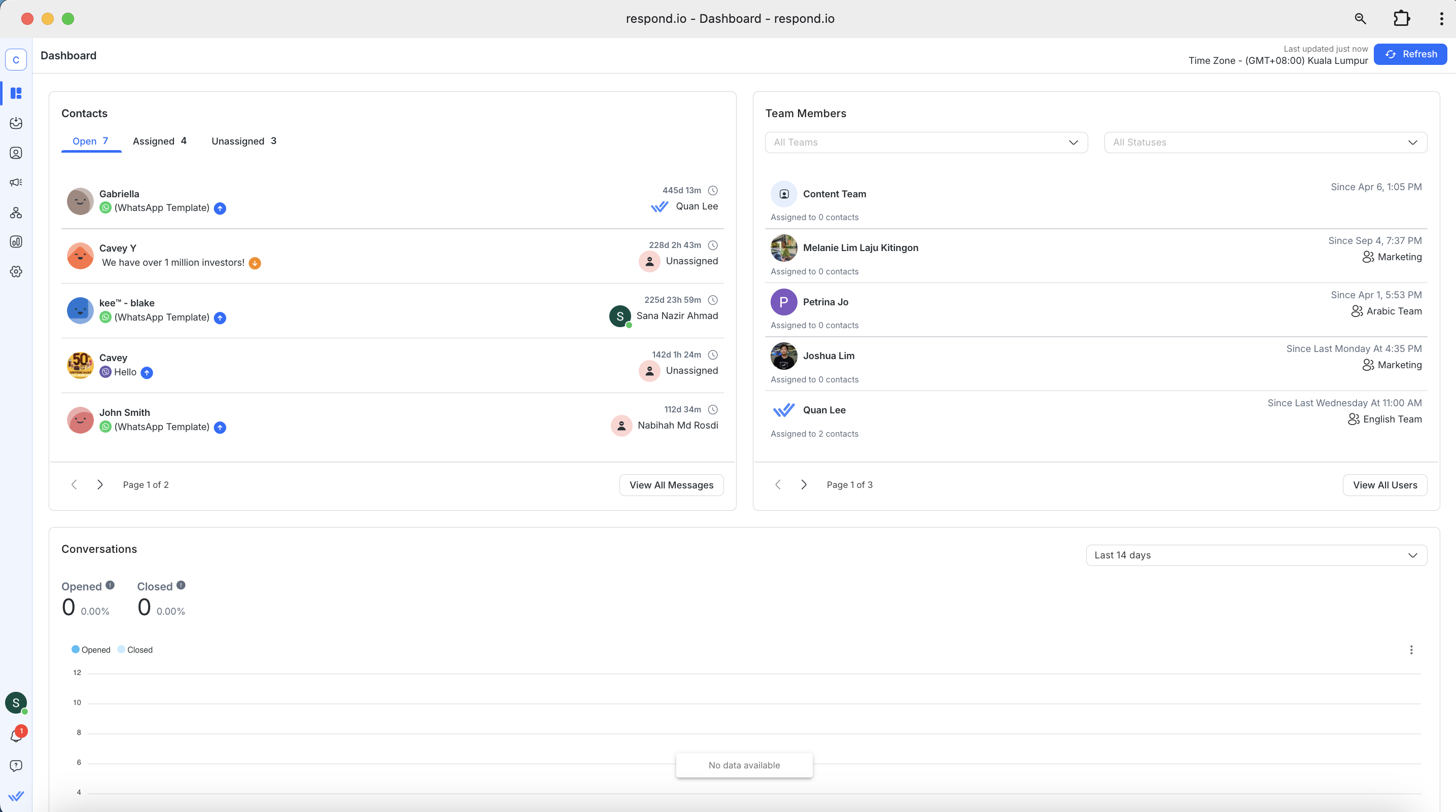
What's next?
Now the space is created, start configuring the Workspace for the platform users. Here is what we suggest you do next:
FAQ
Why is Two-Factor Authentication (2FA) verification not required when I sign in using Google Sign-in or SSO?
If you are using Google sign-in and Single Sign-On (SSO), then your account’s Two-Factor Authentication (2FA) is bypassed. However, it is recommended that you set up and use Two-Factor Authentication (2FA) on your Google account or SSO Identity Provider (IDP).
Feeling stuck? Do not fear.
Need assistance? Contact us for support. Help is here!This is the text block that will appear when the button is clicked.
